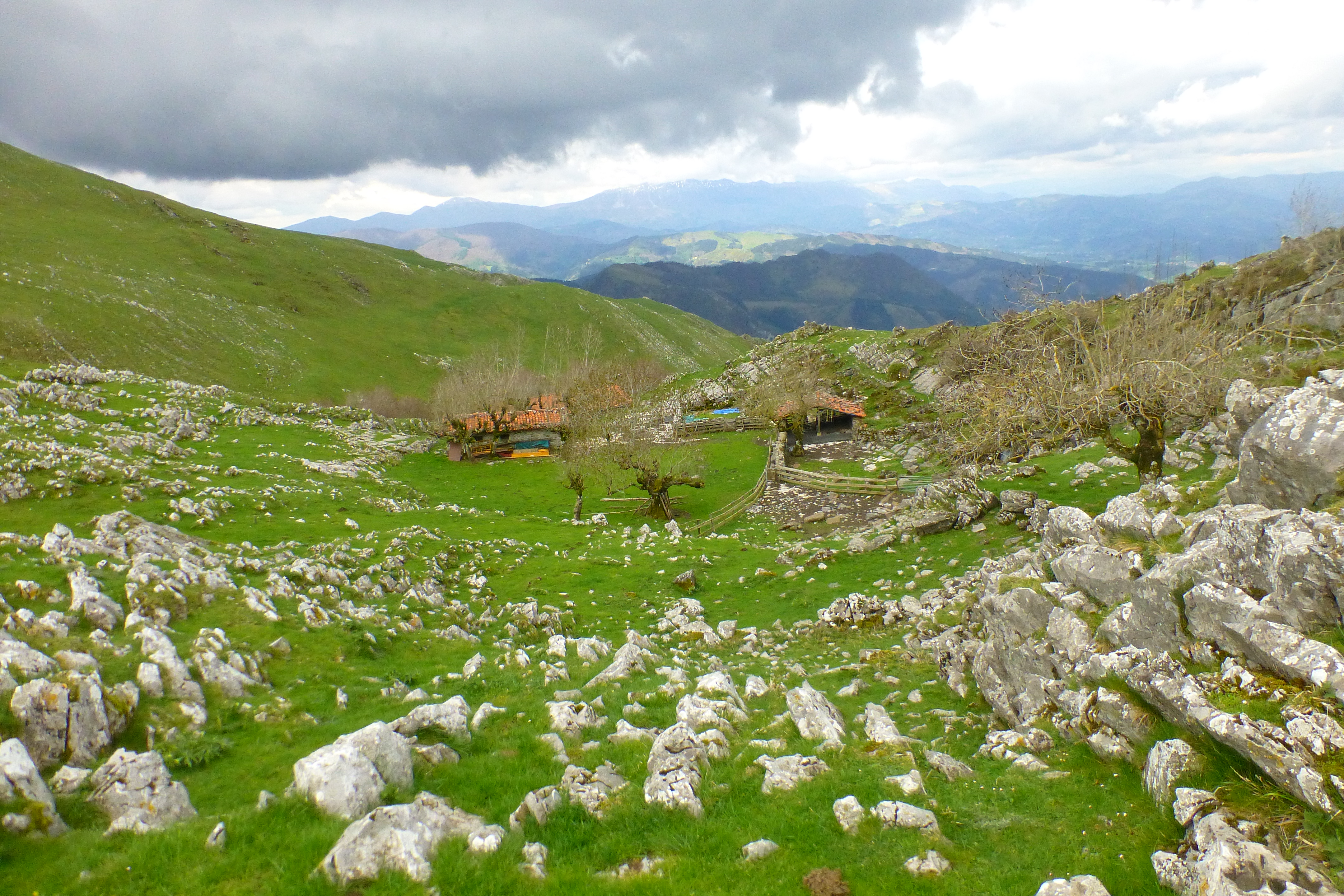Basque ethnography at a glance

Aralar Range. José Ignacio García Muñoz. Labayru Fundazioa Photographic Archive.
Those of you who acknowledge the worthy work shepherds do today might be surprised at the title, for tending large flocks of sheep does not leave much time for games.
One would have to go back more than a century to find flocks in those days hardly reached the hundred head of sheep. Besides, shepherds moved to their huts in the summer pastures, where they lived with their families: wife and children.
Around St John’s Day with the waning moon, shepherds helped one another shear the sheep. Once the flock was milked and lead to grazing land, they made a couple of cheese and by mid-morning could afford for entertainment. Meals were prepared by their wives.
Herders from surrounding folds would meet and often spend time playing games learned from their elders. Jumping over the saltarri of Alotza, lifting stones and the game of pelota, or pilota, were traditional pastimes in the Aralar Range. Convenient mountain plains where pilota was played were known as pilotalekuak. Crook throwing trying to form a cross with them was also popular with shepherds.
Turning to the game of pelota, there used to be twelve pilota places in Aralar more than 40 years ago: those in Alotza, Pagabe, Ganboa, Pardeluts, Uni, Inguitzi, Antsesao, Igaratza, Lareo, Elusbeltz, Mendibil and Pikuta. In the article titled “Sierra de Aralar [Aralar Range]” and published by José Miguel de Barandiaran in the issue no. 26 of Anuario de Eusko Folklore, the location on the map of nine of them was given.

Saltarri of Alotza in Aralar (Gipuzkoa). José Ignacio García Muñoz. Labayru Fundazioa Photographic Archive.
Shepherds chose a meadow on level ground as the site for their pelota games and marked a rectangular-shaped area making shallow furrows with the hoe, with a central partition dividing it into two equal ends. They would play long single or double matches using balls made by them.
Their children were privileged spectators and cheered them. An old man who had been a shepherd for many years recalled that, as a child, kids had the chance to play little matches after their fathers finished. The just mentioned games are reported to have been going on in the final years of the 19th century. Pilota was practised by shepherds both in Aralar and the mountains of Iparralde.
In line with the above description, I remember reading long ago about Basque pelota being the ancestor of tennis. Some English folk allegedly stated tennis was developed by a fellow countryman. While enjoying a holiday in the French part of the Basque Country, he saw locals playing pilota with bare hands on a small rectangular field delimited by marks on the ground and a vertical net in the middle. He liked it, and upon returning to his country, started to use a racket to play the game without harming one’s hands. The French argued similarly crediting its origins in France. It appears plausible tennis evolved from the ancestral game of the palm practised by Basque shepherds.
There is another coincidence to support those assumptions. Similarities can indeed be drawn between the running scores of tennis and pelota games, kintze (from Spanish quince, meaning ‘fifteen’) being the Basque word for ‘point’ from what we gather watching pelota on television and listening to the broadcaster say kintzea egin du when a player scores a point or announce a kintze is required to win the match.
José Zufiaurre – Etniker Gipuzkoa – Etniker Euskalerria Groups
Translated by Jaione Bilbao – Language Department – Labayru Fundazioa
Reference for further information: Livestock Farming and Shepherding, part of the Ethnographic Atlas of the Basque Country collection.


